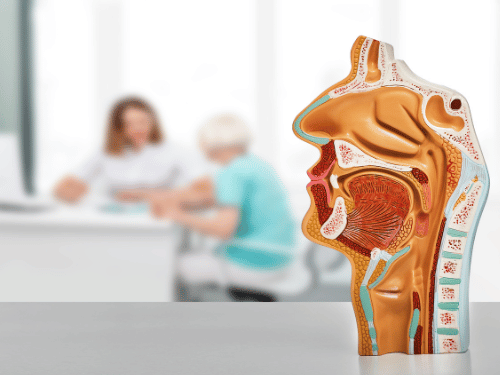
The ear, nose, and throat (ENT) are connected organs that help us breathe, speak, hear, and keep our health in general. Knowing how these organs are put together can help you figure out how they work and how to keep them healthy.
The Ear:
The outer ear, the middle ear, and the inner ear are the three main parts of the ear.
The outer ear is the part of the ear that you can see. It is where sound waves are picked up and sent into the ear canal. The ear canal leads to the middle ear, which has the eardrum and three small bones called ossicles. When sound waves hit these bones, they move and send the vibrations to the inner ear.
The inner ear contains the cochlea, a snail-shaped organ that converts sound waves into electrical signals that are sent to the brain. The inner ear also contains the vestibular system, which helps us maintain balance.
The Nose:
The nose is the most important part of the respiratory system. It filters, warms, and adds moisture to the air we breathe. The nasal septum separates the nose’s two nasal cavities.
Mucous membranes line the inside of the nose, and there are tiny hair-like structures called cilia in the nose. The cilia help catch dust, dirt, and other particles, and the mucous membranes make mucus to help moisten and filter the air.
The Throat:
The throat, also called the pharynx, is a muscular tube that connects the nose and mouth to the esophagus and trachea. There are three parts to the pharynx: the nasopharynx, the oropharynx, and the laryngopharynx.
The nasopharynx is the part of the throat that is closest to the nose and connects the nose to the rest of the throat. The oropharynx is the middle part of the pharynx. It connects the mouth to the throat. The laryngopharynx is part of the pharynx that is at the bottom. It is connected to the throat, esophagus, and trachea.
The pharynx is an important part of both the digestive and respiratory systems. It helps make sure that food and liquids go into the esophagus instead of the trachea.
Conclusion:
The ear, nose, and throat are all complicated organs that help us hear, speak, and breathe. Understanding how they are put together can help us understand how they work and how to keep them healthy. An ENT specialist can help you find any problems and make sure your ears, nose, and throat are working well by giving you regular checkups.
About Author
Dr. Vivek Kumar Pathak has several decades of domain-specific experience under his belt. Dr. Vivek Kumar Pathak has over 10 years of experience in his field. The clinician treats and manages a wide range of conditions such as Nasal Polyps, Radiation Necrosis in the Neck, Hyperthyroidism, Goiter
Some of the common conditions treated by the ENT surgeon are hearing loss, tonsillitis, and nasal polyps. The cochlear implant helps bypass the damaged ear and also stimulates the auditory nerve. “Tonsillectomy is the surgical removal of your tonsils and is performed if there is a frequent occurrence of tonsillitis.”
Dr. Vivek Kumar Pathak
MBBS, MS ( ENT Specialist)Consultant ENT at Kailash Hospital, Greater Noida, U.P., India
ENT Surgeon – Sharda Hospital, Greater Noida
ENT Surgeon at Doxtreat Healthcare, Noida Sector- 20
Book your appointment
Booking an appointment with Dr. Vivek Kumar Pathak is easy and convenient. Simply give us a call or visit our website to schedule a consultation.
Book your appointment
Website www.doxtreat.com
Call Now 07838450942
Author